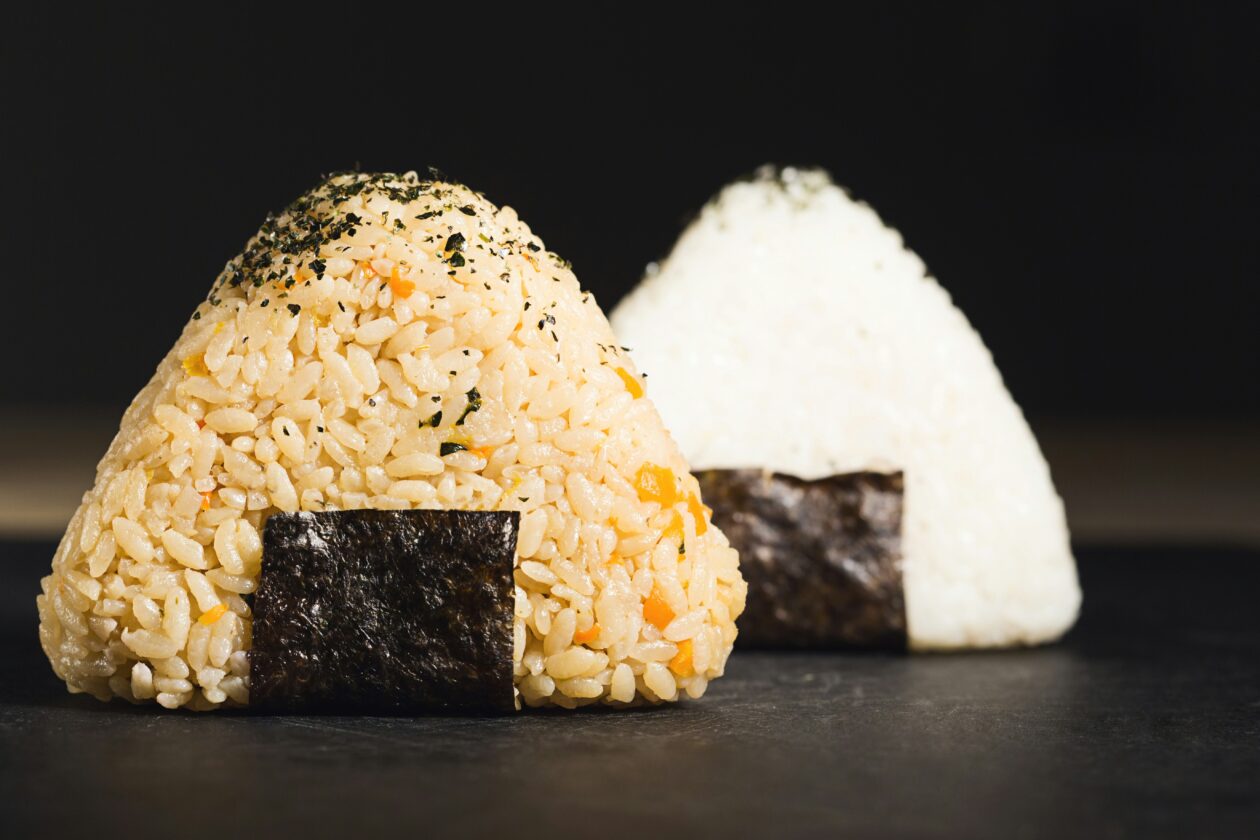Introduction
Rice, a ubiquitous and esteemed food item that transcends cultural boundaries, is essential in an innumerable variety of dishes. Due to its extensive historical background and remarkable nutritional adaptability have become a fundamental component of the human diet, providing nourishment and cultural importance to a vast population. In discussions surrounding weight loss and nutritious dietary practices, rice is frequently criticized, necessitating a more thorough analysis of its function in dieting approaches.
The discourse about the appropriateness of rice in weight loss regimens comprises a wide range of viewpoints and analyses. Supporters argue in favor of its satiating fiber and energy-supplying carbohydrates, whereas detractors express apprehensions regarding its caloric density and prospective glycemic effects. The establishment of this dichotomy provides a foundation for a comprehensive examination of the role of rice in weight management, encouraging readers to contemplate a range of perspectives supported by evidence.
Nutritional Value of Rice

Grain Breakdown: Rice comprises various cultivars, each with distinct nutritional characteristics. Refining white rice, the most prevalent variety, eliminates the bran and germ, yielding a refined grain lower in fiber and nutrients. On the other hand, brown rice maintains its bran and germ, providing an increased fiber content in addition to vital minerals and vitamins, including magnesium and B vitamins. Moreover, distinct flavor profiles and antioxidant-rich pigmentation distinguish red, black, and wild rice varieties, which enhance their nutritional and culinary appeal.
Whole vs. Refined: The selection between refined rice and whole grain rice carries substantial consequences regarding weight management and dietary well-being. Although fine white rice might offer carbohydrates that are rapidly absorbed and provide instant energy, its low fiber content has the potential to induce sharp increases in blood sugar levels, which could hinder endeavors to lose weight. On the other hand, by selecting whole grain varieties such as brown rice, one can experience the advantages of prolonged energy release and increased satiety due to their elevated fiber content. This differentiation emphasizes the significance of including whole grains in a well-balanced diet that promotes health and weight loss.
Considerations for Consumption: When integrating rice into a weight loss regimen, it is critical to exercise mindful judgment and regulate portion sizes. Choosing whole grain varieties rather than refined alternatives can offer supplementary nutritional advantages and promote satiety, thereby aiding in the effective management of caloric intake. Incorporating abundant vegetables, lean proteins, and healthy lipids into rice dishes can create well-balanced meals that foster sustained energy and satiety. In conclusion, by incorporating mindful eating practices and portion control, individuals can incorporate rice into a nutritious diet while striving to achieve their weight loss objectives.
Impact on Weight Management
Glycemic Dynamics: A comprehensive comprehension of rice’s glycemic index (GI) is imperative when evaluating its potential impact on weight management. The GI assesses the rate at which dietary carbohydrates cause an increase in blood sugar. Foods such as white rice induce blood sugar surges with a high glycemic index (GI), which may increase appetite and possibly overeating. Recent research highlights that the glycemic response to rice can vary depending on variables such as cooking method and rice variety. With this sophisticated comprehension, individuals are empowered to make well-informed decisions regarding rice consumption while attempting to lose weight.
GI Contrast: Significant differences in the effects of white rice, which has a high glycemic index, and brown rice, which has a lower glycemic index, distinguish them. Brown rice, determined from purified white rice by its intact bran and germ layers, possesses a reduced GI. The advantages of a reduced glycemic index (GI) include prolonged sensations of fullness, slower digestion, and more stable blood sugar levels—all of which contribute to effective weight management. Including brown rice or other whole grain varieties in one’s dietary regimen has facilitated sustainable weight loss by promoting satiety and reducing excessive tendencies, as supported by recent research.
Practical Considerations: In weight management, although the GI of rice is a crucial determinant, it is equally imperative to consider overall dietary patterns and portion sizes. In addition to promoting nutrient intake and satiety, rice, accompanied by an abundance of vegetables, protein-rich foods, and healthy lipids, can assist in maintaining long-term weight loss objectives. Furthermore, individuals can enhance their weight loss endeavors while incorporating rice into a well-balanced diet by adopting mindful eating practices and exercising portion control. By exercising critical thinking and embracing a comprehensive dietary philosophy, individuals can optimize the health benefits of rice consumption in conjunction with their efforts to achieve a healthy body weight.
Strategies for Incorporation

Practical Tips: Practical approaches can significantly impact the integration of rice into a weight loss regimen. Commence by adopting portion control principles and selecting smaller servings to regulate caloric intake efficiently. Furthermore, it is advisable to supplement rice with protein-dense meals, including grilled poultry, tofu, or beans, to enhance satiety and facilitate the preservation of muscle mass while undergoing weight loss. Add abundant vegetables to your meals to add bulk, fiber, and vital nutrients. You can incorporate rice into a well-balanced diet that promotes successful weight loss by incorporating a diverse range of nutrient-dense foods onto your plate.
Resistant Starch Boost: An inventive approach to optimizing the weight loss advantages of rice involves harnessing the potential of resistant starch. Similar to dietary fiber, immune starch functions within the body to facilitate digestion, stimulate satiety, and potentially augment fat oxidation. One potential method to increase the resistant starch content of rice is to cook it and allow it to cool before reheating or ingesting. A portion of the digestible starches is converted to resistant starches during this process, known as retrogradation, thereby increasing the resistance of the rice to digestion. By integrating chilled rice into one’s meals, one can capitalize on the augmented potential for weight loss while indulging in this multipurpose staple.
Flavorful Variations: Incorporating diverse rice varieties and flavor combinations into your weight loss regimen can create a stimulating and gratifying experience. Consider aromatic jasmine rice, nourishing wild rice, or nutty brown rice as alternatives to incorporate variety into your meals while capitalizing on the distinct nutritional advantages provided by each array. A calorie-free way to enhance the flavor profile of rice is to combine herbs, seasonings, or citrus zest while it is being cooked. By utilizing rice’s adaptability and ingenuity in the kitchen, one can savor delectable, gratifying meals that aid in pursuing weight loss objectives.
Including rice in a weight-loss diet necessitates careful consideration and strategic decision-making. By adhering to these pragmatic recommendations and capitalizing on novel methodologies such as increasing the content of resistant starch, one can effectively support their weight loss endeavors while capitalizing on the nutritional advantages of rice. Conscious of balance, variety, and moderation when planning meals that promote sustained weight management success and are both gratifying and nutritious.
Is Rice Good for Weight Loss Diet?
A. Answer in Short:
Yes, rice can be a part of a weight loss diet when consumed in moderation and in the context of a balanced meal plan. While rice is often demonized for its high carbohydrate content, it can still have a place in a weight loss regimen due to its versatility and nutritional value. However, portion control and choosing the right type of rice are crucial factors to consider.
B. Answer in Depth:
Rice is a staple food for billions of people worldwide, providing essential nutrients such as carbohydrates, protein, and various vitamins and minerals. Despite its reputation as a high-carb food, rice can be incorporated into a weight-loss diet when consumed mindfully. Opting for whole grain varieties like brown rice, black rice, or wild rice over refined white rice can offer additional fiber and nutrients, promoting satiety and aiding in weight management.
Furthermore, the concept of glycemic index (GI) plays a role in determining the impact of rice on blood sugar levels and weight loss. Foods with a high GI, like white rice, may cause rapid spikes in blood sugar, leading to increased hunger and potential overeating. On the other hand, lower GI options like brown rice are digested more slowly, providing a more sustained release of energy and promoting feelings of fullness.
Incorporating rice into meals alongside lean protein sources, healthy fats, and plenty of vegetables can help create a well-balanced, satisfying dish that supports weight loss goals. Additionally, cooking and cooling rice to increase its resistant starch content may offer additional benefits for weight management by improving insulin sensitivity and promoting fat oxidation.
In summary, rice can be a beneficial component of a weight loss diet when consumed in moderation and with other nutritious foods. Opting for whole-grain varieties and practicing portion control are vital strategies for maximizing the nutritional benefits of rice while supporting weight loss goals. By understanding the role of the glycemic index and exploring innovative cooking methods like cooling rice to boost resistant starch content, individuals can enjoy rice as part of a healthy and balanced approach to weight management.
FAQ about Rice and Weight Loss
Q: Can I eat rice and still lose weight?
A: You can eat rice and still lose weight by incorporating it into a balanced diet and controlling portion sizes. Opt for whole grain varieties like brown rice, which offer more fiber and nutrients to support weight loss goals.
Q: Can I eat rice when trying to lose belly fat?
A: Eating rice alone won’t specifically target belly fat, but incorporating it into a calorie-controlled diet alongside regular exercise can contribute to overall weight loss, including reduction in belly fat over time.
Q: Can I lose weight by eating rice three times a day?
A: While eating rice three times a day may not be necessary or ideal for everyone, it’s possible to lose weight by consuming rice in moderation and ensuring it’s part of a well-balanced meal plan that includes a variety of nutritious foods.
Q: Which rice is good for losing weight?
A: Whole grain varieties like brown rice, black rice, and wild rice are generally better choices for weight loss due to their higher fiber content and lower glycemic index than refined white rice.
Q: Can I skip rice for weight loss?
A: While you can omit rice from your diet for weight loss, it’s unnecessary. Incorporating rice in moderation and choosing whole grain varieties can still support weight loss efforts when combined with a healthy lifestyle.
Q: How much rice is too much?
A: The appropriate amount of rice varies depending on individual calorie needs and dietary preferences. As a general guideline, aim to include about half a cup to one cup of cooked rice per meal and balance it with other nutrient-dense foods.
Q: Can I eat rice every day?
A: Yes, you can eat rice daily, every day, as a balanced diet. Opting for whole-grain varieties and practicing portion control can help ensure that rice consumption remains a healthy and sustainable dietary choice.
Q: Is rice high in calories?
A: Rice is relatively low in calories compared to other staple foods, especially when consumed in appropriate portions. However, portion control is essential to prevent excessive calorie intake.
Q: How much rice per day?
A: The amount of rice you consume daily depends on various factors, including your calorie needs, activity level, and overall dietary preferences. Consuming rice in moderation is generally recommended as part of a balanced diet.
Q: Does the rice diet work?
A: The effectiveness of the rice diet for weight loss may vary depending on individual factors such as calorie intake, overall diet quality, and adherence to the plan. While some people may experience weight loss on a rice-based diet, it’s essential to ensure it includes a variety of nutritious foods for long-term health.
Q: Is rice or pasta better for weight loss?
A: Both rice and pasta can be part of a healthy diet when consumed in moderation and in the context of a balanced meal plan. The choice between rice and pasta ultimately depends on personal preference and dietary needs.
Q: What should you eat for weight loss?
A: For weight loss, focus on consuming various nutrient-dense foods such as fruits, vegetables, lean proteins, whole grains, and healthy fats. Aim for balanced meals that provide essential nutrients while controlling portion sizes.
Q: How do you lose weight fast?
A: Rapid weight loss is not recommended for long-term success or overall health. Instead, focus on sustainable lifestyle changes such as adopting a balanced diet, increasing physical activity, getting enough sleep, and managing stress.
Q: Does rice make your belly fat?
A: Eating rice alone is not likely to specifically cause belly fat. However, consuming excessive calories from any source, including rice, can contribute to weight gain and increase abdominal fat over time.
Q: Is basmati rice good for weight loss?
A: Basmati rice, mainly brown basmati rice, can be a suitable choice for weight loss due to its lower glycemic index and higher fiber content than other white rice varieties.
Q: 7-day rice diet plan
A: While there are various versions of the 7-day rice diet plan, it typically involves consuming rice alongside fruits, vegetables, and lean proteins for a week. While short-term weight loss may occur, consulting with a healthcare professional before starting any restrictive diet plan is essential.
Q: Eating rice at night increases weight
A: Eating rice at night alone is not likely to directly cause weight gain. However, consuming a large, calorie-rich meal late at night may lead to overeating and potential weight gain over time. Focusing on overall calorie intake and portion sizes throughout the day is essential.
Q: Eating only rice for a month
A: Eating rice for an extended period is not recommended as it can lead to nutrient deficiencies and adequate calorie intake. A balanced diet that includes a variety of foods is essential for meeting nutritional needs and supporting overall health.
Q: Is jasmine rice good for weight loss?
A: Jasmine rice, like other varieties of white rice, is relatively low in fiber compared to whole-grain options. While it can still be part of a weight loss diet when consumed in moderation, opting for whole grain varieties may offer more nutritional benefits.
Conclusion
In summary, the article sheds light on the role of rice in weight loss diets, providing valuable insights into its nutritional content and impact on weight management. Evidence shows that although rice can be incorporated into a nutritious diet, whole grain varieties, such as brown rice, are more favorable than refined alternatives because of their increased fiber content and reduced glycemic index. Additionally, it is critical to comprehend the significance of portion control and balanced meal planning to maximize the benefits of rice consumption during a weight loss voyage.
Individuals must approach rice consumption with mindfulness and awareness when making decisions regarding one’s diet. Although rice can aid in weight loss when consumed in moderation. As a component of a well-balanced diet, other crucial elements for success include portion control, culinary techniques, and overall dietary variety. By exercising self-control over portion sizes, selecting whole grain varieties, and combining rice with lean proteins and vegetables, people can optimize its nutritional advantages in conjunction with their efforts to lose weight.
Incorporating rice into a weight loss regimen is ultimately a matter of personal preference, influenced by cultural affinities, health concerns, and personal preferences. The significance of empowering individuals to make well-informed decisions that are in line with their specific requirements and objectives is underscored in the article. Readers are motivated to customize their dietary approaches per their personal preferences and way of life, emphasizing holistic health and well-being, which may involve utilizing alternative cereals and carbohydrate sources or integrating rice as a primary component. Individuals can accomplish their weight loss objectives with assurance and self-determination by adopting a well-rounded and adaptable strategy toward rice consumption.
Reference
Musa-Veloso, Kathy, Theresa Poon, Laura S Harkness, Marianne O’Shea, and YiFang Chu. 2018. “The Effects of Whole-Grain Compared with Refined Wheat, Rice, and Rye on the Postprandial Blood Glucose Response: A Systematic Review and Meta-analysis of Randomized Controlled Trials.” The American Journal of Clinical Nutrition 108 (4): 759–74. https://doi.org/10.1093/ajcn/nqy112.
Myupchar. 2020. “White, Brown, Red, Black or Wild: Which Rice Variety Is the Healthiest Choice for You?” Firstpost. Firstpost. January 30, 2020. https://www.firstpost.com/health/white-brown-red-black-or-wild-which-rice-variety-is-the-healthiest-choice-for-you-7976611.html.
Was this helpful?

Joseph Emb, RDN
Founder of StyleVitally.com | Registered Dietitian & Wellness Advocate
What I Cover:
I’m passionate about connecting nutrition science and everyday wellness to help people live healthier, more vibrant lives. I write about evidence-based nutrition, mindful eating, sustainable lifestyles, and holistic well-being at StyleVitally.com.
My Background:
The University of Texas in Austin, where I earned my Dietetics diploma, laid the groundwork for my nutrition and health career. My training and hands-on experience taught me the science and art of using nutrition to enhance health and well-being.
Professional Journey:
I’m an RDN with lots of experience. I’ve helped people seeking tailored nutritional recommendations in clinical settings and community outreach programs. My constant learning and professional development ensure that my recommendations are always based on the latest evidence.
Ethical Commitment:
My practice prioritizes integrity. My content is transparent and objective, following the most significant ethical standards. I can give my audience unbiased advice because I’m not affiliated with food businesses or industry associations. I want to help people make informed health decisions that match their values and ambitions.
Join Me on the Wellness Journey:
Join me on the path to vitality and well-being, whether facing nutritional issues, seeking sustainable lifestyle changes, or simply wanting a better, happier you. We’ll discover how diet, mindfulness, and holistic well-being can maximize your potential.









